Dreaming of a bathroom or kitchen that truly stands out? It’s easy to focus on the tiles, but the right grout can make all the difference. Especially when it comes to black grout. This bold choice can dramatically transform your tilework, particularly in showers and high-traffic areas. But is it right for you? We’ll explore the pros and cons of using black grout on tiles, diving into practical tips for installation and maintenance, so you can make an informed decision
Black grout isn’t your everyday, run-of-the-mill grout. It’s bold, it’s stylish, and it can completely transform the look of your tiles. But like any design choice, it comes with its own set of pros and cons. That’s why we’re here to break it all down for you. We’ll walk you through the good stuff, the not-so-good stuff, and everything in between, so you can decide if black grout is the right move for your next home project. So, grab a cup of coffee, and let’s dive in!
Pros of Black Grout: Why It’s a Bold & Stylish Choice
Ready to transform your space with a touch of drama? Black grout is a popular choice for homeowners looking to make a statement. Let’s explore why:
Dramatic Contrast and Modern Appeal
Imagine a classic white subway tile backsplash – now replace the usual light gray grout with a striking, deep, matte black. The difference is undeniable. Black grout creates a powerful contrast, making tiles pop and forming eye-catching grid patterns that add a modern, sophisticated vibe to any room.

Highlighting Unique Tile Shapes
Beyond the dramatic look, black grout can be a game-changer for showcasing unique tiles. Whether you’re working with trendy hexagon tiles or intricate patterned tiles, black grout will highlight their shapes and designs, turning your tilework into a true focal point. It adds definition and depth, making your tiles the star of the show.
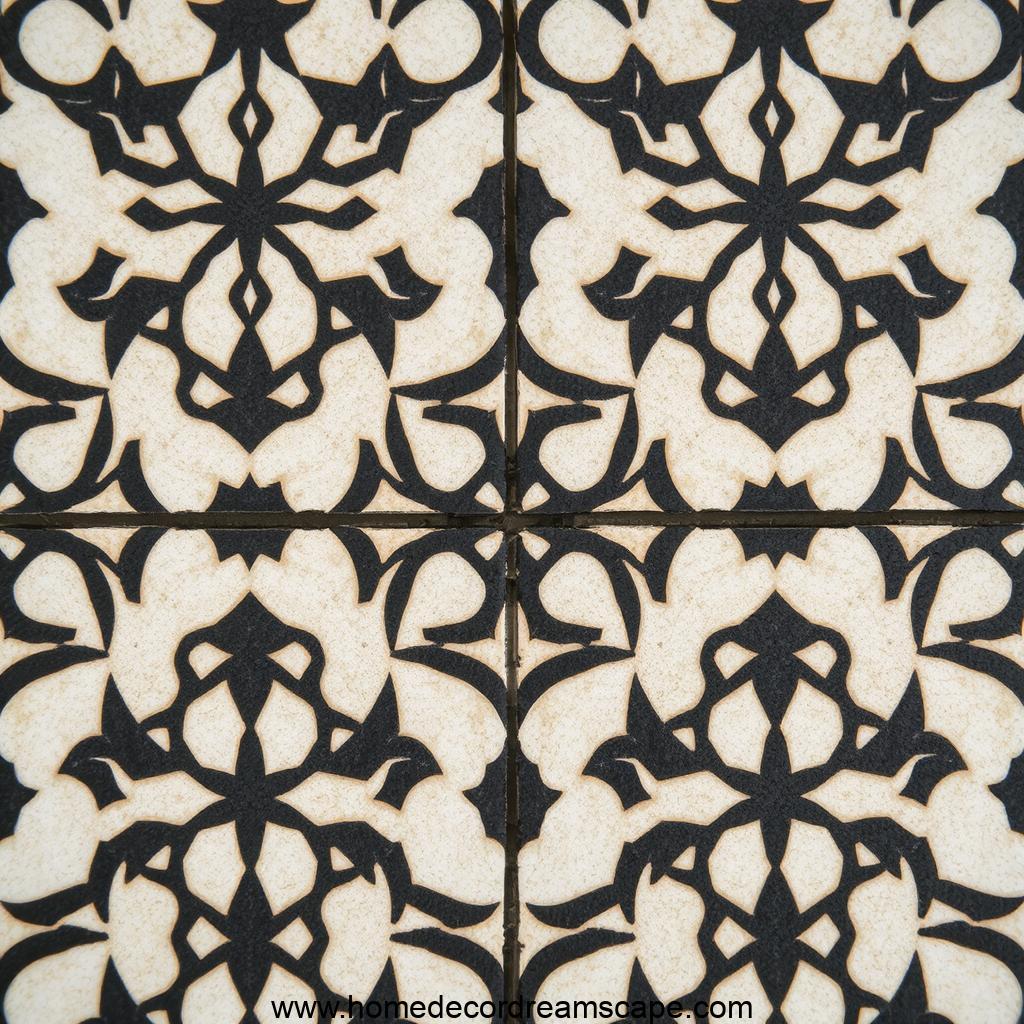
Practicality: Hiding Dirt and Grime
Let’s be honest, grout gets dirty, especially in high-traffic areas like kitchens and bathrooms. Black grout excels at hiding dirt, grime, and minor stains far better than lighter grout colors. If you’re looking to minimize scrubbing and maintenance, black grout is a practical choice for busy households or areas prone to spills.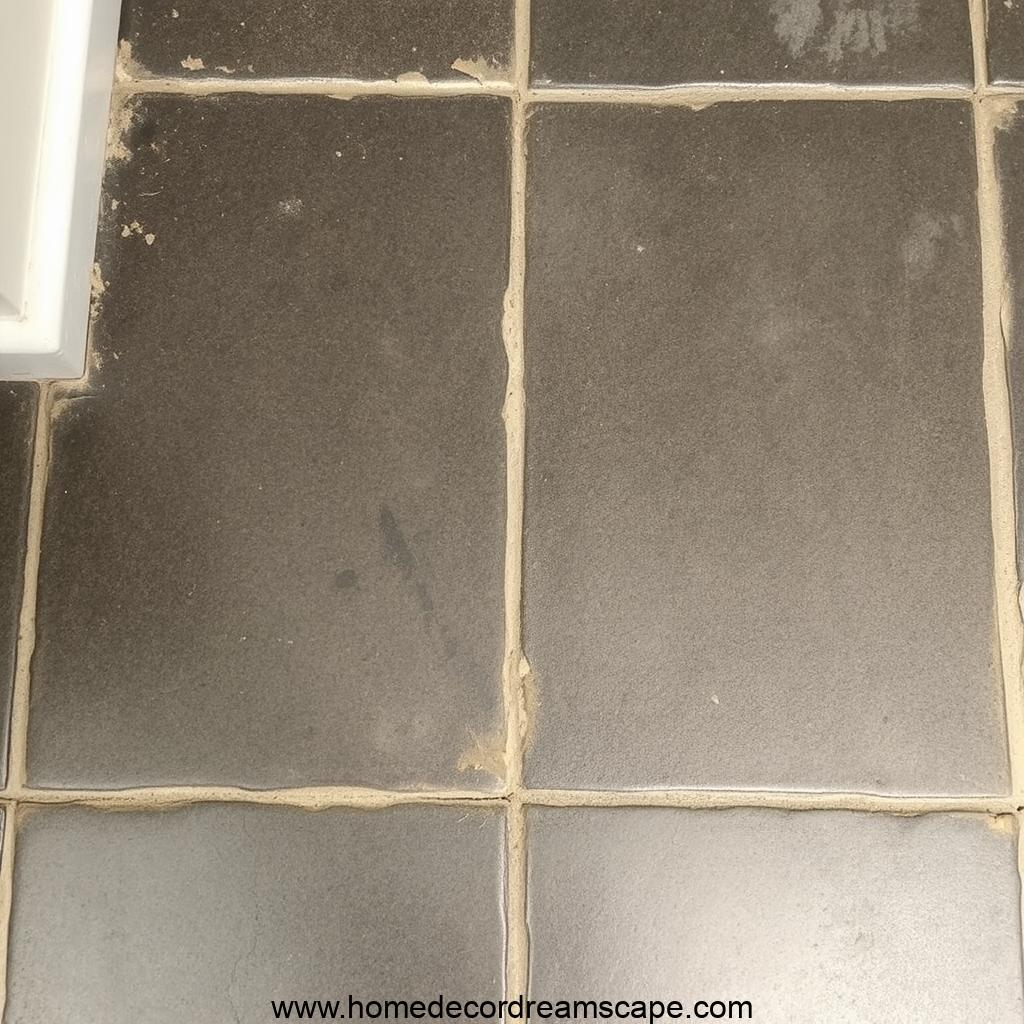
Complementing Modern Design Trends
Black grout seamlessly integrates with modern design trends. Think sleek black faucets, drawer pulls, and light fixtures. Black grout ties these elements together, creating a cohesive and luxurious look that feels straight out of a design magazine.
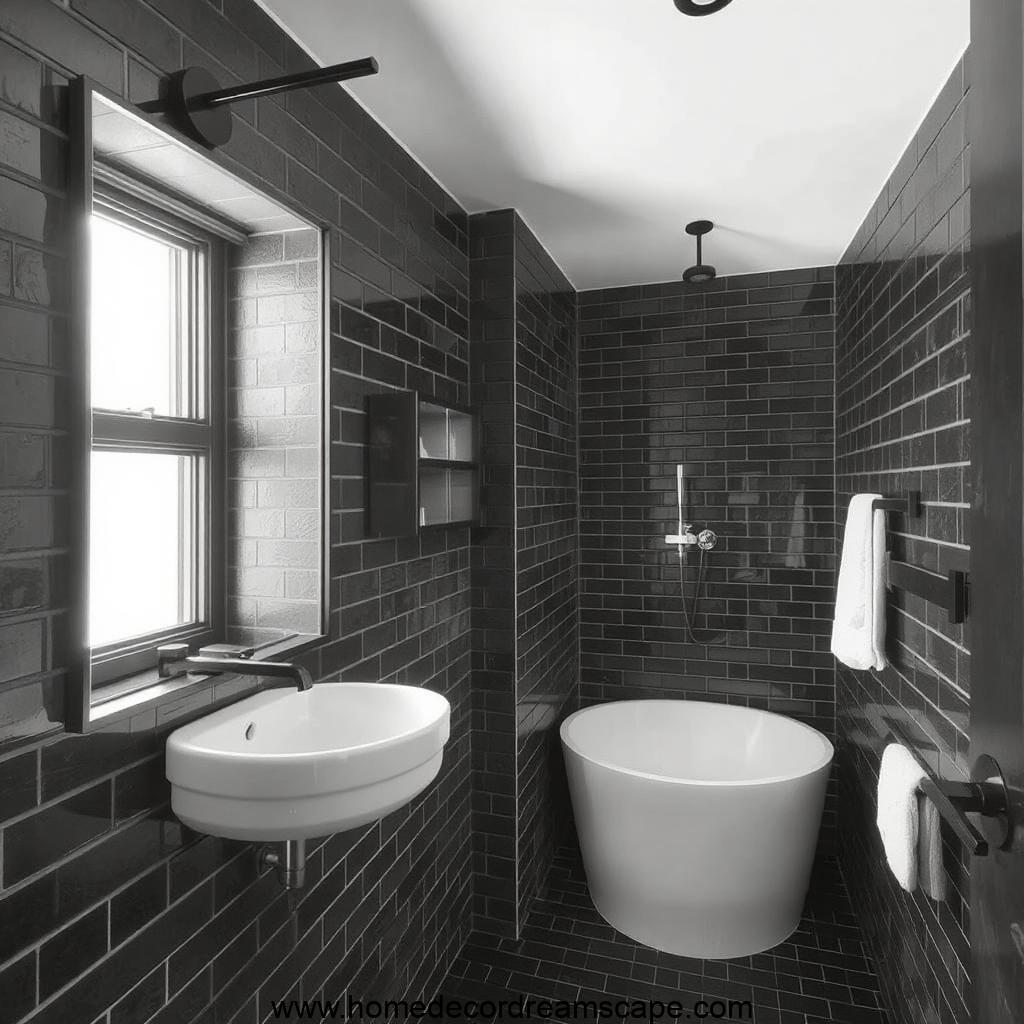
Pros of Black Grout Summarized
- Creates a bold, modern contrast with light-colored tiles
- Hides dirt and stains better than white grout
- Enhances the aesthetic appeal of patterned or dark tiles
- Requires less frequent cleaning compared to light-colored grout
- Works well in industrial and contemporary design themes
Cons of Black Grout: Common Issues & How to Fix Them
While black grout offers numerous advantages, it’s essential to be aware of the potential challenges. Let’s explore the common issues and how to address them:
Challenging Installation: Precision Required
One of the biggest hurdles with black grout is installation. It’s less forgiving than lighter grout colors, and mistakes are highly visible. Precision is paramount – from mixing the grout correctly to applying it evenly and cleaning up excess before it sets. If you’re not confident in your DIY skills, hiring a professional is highly recommended.
Visible Soap Scum and Mineral Deposits
While black grout hides dirt effectively, it can highlight soap scum, mineral deposits, and other buildup. These white, chalky deposits can stand out against the dark color, requiring diligent cleaning and maintenance. Proper sealing is crucial, and you’ll need to use appropriate cleaning products to avoid damage or discoloration.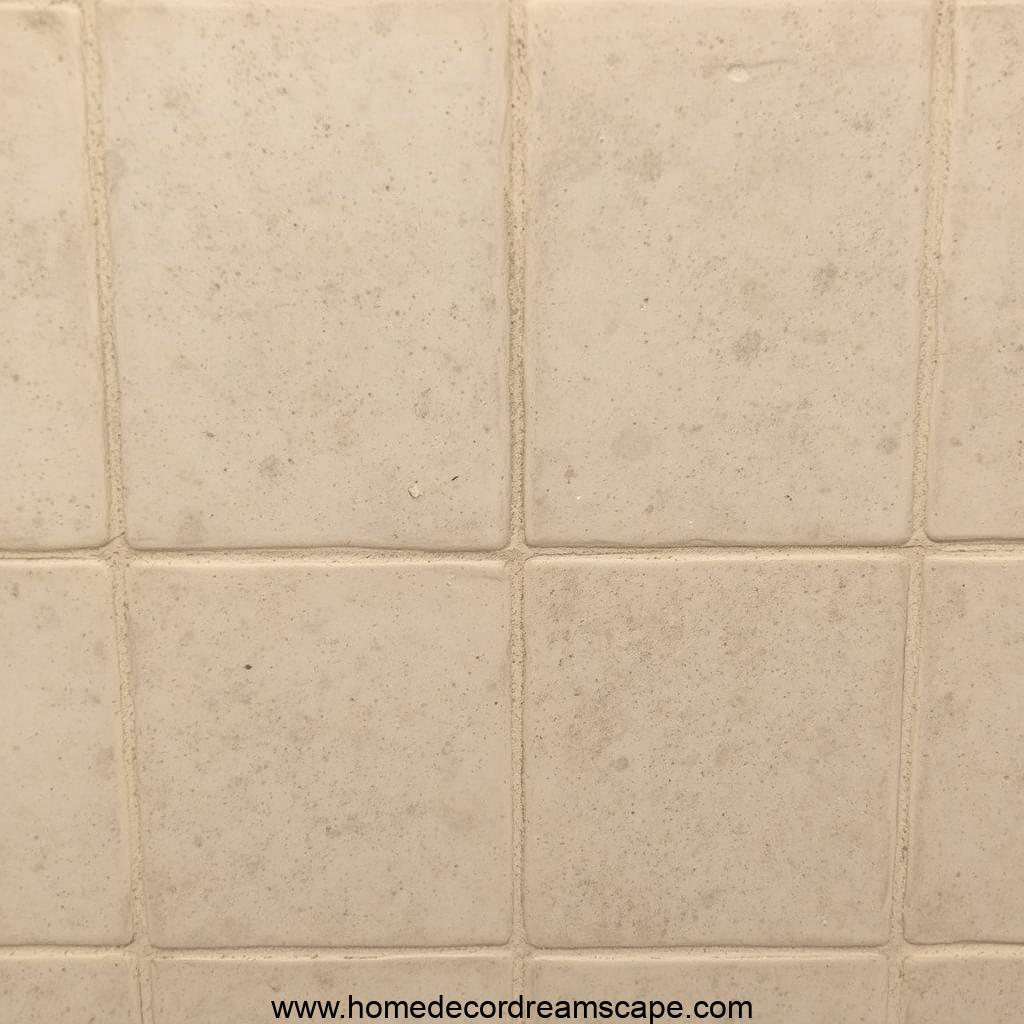
Potential for Fading and Discoloration
Fading is a potential issue, especially when black grout is exposed to harsh chemicals or sunlight. To minimize fading, choose a high-quality grout and seal it thoroughly. Even with proper care, occasional touch-ups may be necessary to maintain its vibrant color.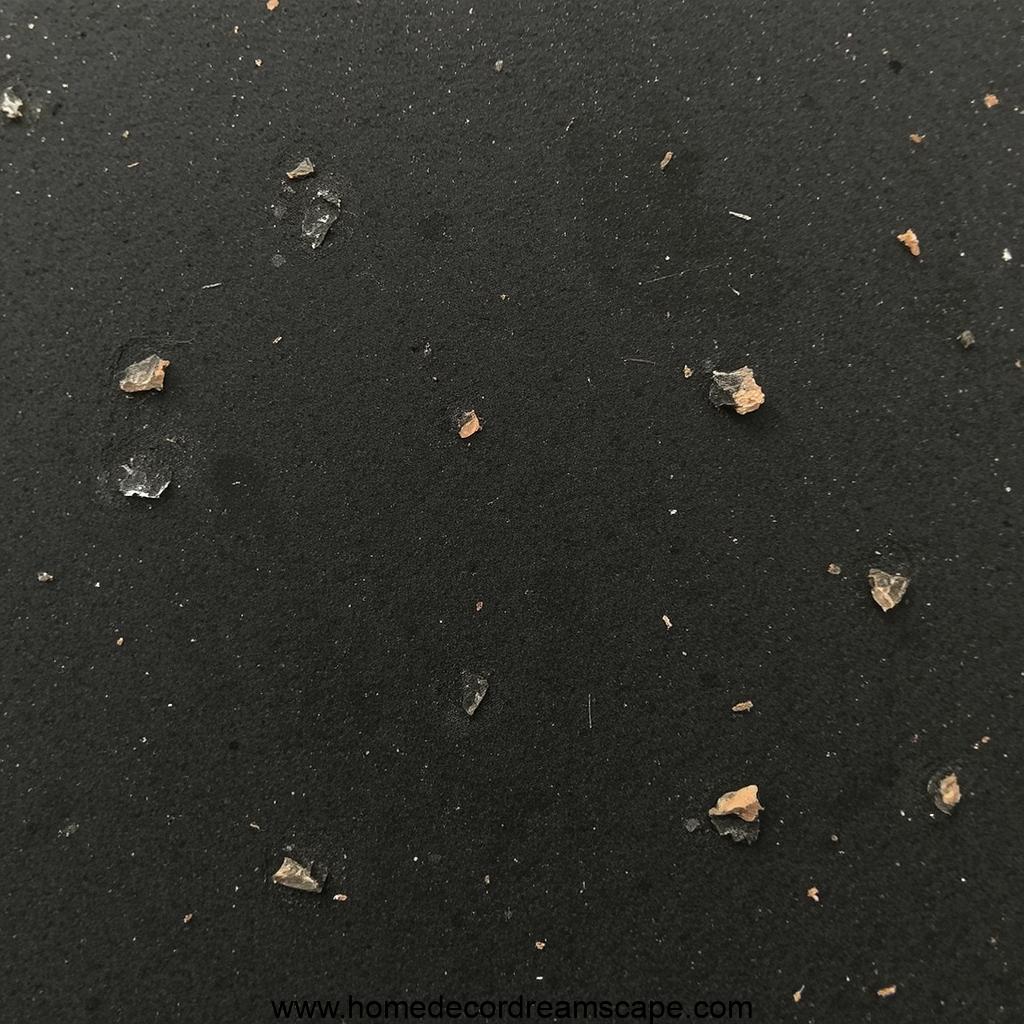
Design Limitations: Space and Style Considerations
Black grout’s dramatic look may not suit every space or design style. In small rooms, it can feel overwhelming, making the space appear smaller. It may also clash with light, airy, or traditional aesthetics. Consider the room’s lighting, as it can significantly impact how black grout appears.
Cons of Black Grout Summarized
- Can fade over time due to cleaning chemicals and moisture exposure
- Harder to match with certain tile colors and styles
- Repairs and touch-ups can be more noticeable
- Can show soap scum and hard water stains in bathrooms
- Requires high-quality sealant to maintain its appearance
Pros and Cons of Black Grout Taken Together
| Pros of Black Grout | Cons of Black Grout |
|---|---|
| Bold, modern aesthetic | Requires precise installation |
| Hides dirt & stains | Can show soap scum & mineral deposits |
| Pairs well with trendy design elements | Prone to fading if not sealed properly |
| Enhances unique tile patterns | Might make small spaces feel even smaller |
Is Black Grout Hard to Maintain? Tips to Keep It Looking Fresh
So, you’re still thinking about black grout? Awesome! Let’s get down to the nitty-gritty and talk about some practical things to keep in mind. First off, choosing the right tiles is key. Not all tiles play nice with black grout. Porcelain and ceramic tiles are generally great choices because they’re durable and easy to clean. But you’ll also want to think about the tile finish. A glossy finish will reflect light and create a more dramatic contrast, while a matte finish will give you a more subtle, understated look. It’s all about finding the right balance for your space.
Now, let’s dive into installation best practices. Like we mentioned earlier, precision is your friend. When you’re picking out your grout, don’t skimp on quality. Go for a reputable brand that’s known for its durability and color consistency. And before you even start grouting, make sure your tiles are clean and dry. Once you’ve mixed your grout according to the manufacturer’s instructions, apply it evenly and work it into the joints using a grout float. Take your time and be meticulous. After you’ve let the grout set for a bit, use a damp sponge to clean off any excess and smooth out the grout lines.
Sealing is another crucial step. Think of it as putting a protective shield over your grout. It’ll help prevent stains, mold, and discoloration. You’ll want to use a high-quality sealer that’s specifically designed for grout. And don’t forget to reapply it every year or two, especially in high-moisture areas like bathrooms and showers.
One common headache with grout is grout haze – that thin, cloudy film that can appear after installation. Don’t panic! It’s usually easy to remove with a mild acidic cleaner or a grout haze remover. Just follow the instructions on the product label and you’ll be good to go.
Now, let’s talk maintenance. Keeping your black grout looking its best is all about regular cleaning. Avoid harsh chemicals or abrasive cleaners, as they can damage the grout or cause fading. Instead, opt for a mild, pH-neutral cleaner or a solution of water and vinegar. A soft brush or sponge will do the trick for scrubbing away dirt and grime. And remember to dry your grout thoroughly after cleaning to prevent mold and mildew growth.
If you do notice any fading or discoloration, don’t worry, there are solutions. You can try using a grout stain or color sealer to restore the original color. Just make sure to choose a product that’s compatible with your grout type.
Best Tile Choices for Black Grout (And Which Ones to Avoid)
Finally, let’s talk design. Black grout can look amazing in a variety of spaces. In bathrooms, it can create a spa-like atmosphere, especially when paired with white or light-colored tiles. In kitchens, it can add a modern, industrial touch to backsplashes and floors. And don’t be afraid to experiment with different tile patterns and layouts. Herringbone, subway, and geometric patterns all look fantastic with black grout. However, make sure you look at examples online, or in person, to get a feel for how the black grout will look in the room.
Conclusion
So, there you have it – the pros and cons of choosing black grout. It’s a bold and stylish choice that can add a ton of personality to your space. But it’s also a choice that requires careful consideration and planning. Black grout is not for everyone, and it is important to understand the maintenance that is required.
Ultimately, the decision is yours. If you’re willing to put in the extra effort to install and maintain it, black grout can be a stunning addition to your home. But if you’re looking for a low-maintenance option, you might want to explore other grout colors.
We hope this article has helped you make an informed decision. If you have any questions or comments, feel free to leave them below. We’d love to hear about your experiences with black grout!”
References:
1. Manufacturer & Supplier Websites
- Custom Building Products (www.custombuildingproducts.com) – Information on black grout types, maintenance, and installation.
- Laticrete (www.laticrete.com) – Details on grout sealing, staining, and cleaning best practices.
- Mapei (www.mapei.com) – Professional-grade grout products, color retention tips, and durability insights.
- Tile Council of North America (www.tcnatile.com) for professional grout recommendations.
2. Home Improvement & Interior Design Blogs
- Houzz (www.houzz.com) – Real-life black grout design ideas and homeowner experiences.
- The Spruce (www.thespruce.com) – Guides on grout selection, maintenance, and DIY installation.
- Apartment Therapy (www.apartmenttherapy.com) – Style trends and visual inspirations for black grout applications.
3. DIY & Home Renovation Forums
- Reddit (r/HomeImprovement, r/DIY) (www.reddit.com) – User experiences, challenges, and tips from real homeowners.
- John Bridge Tile Forum (www.johnbridge.com) – Expert advice on grout application, durability, and troubleshooting.


